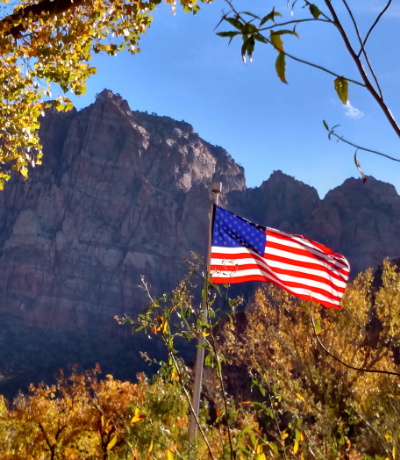USA Travel Guide: 6 Things to Know Before Visiting the United States
If you’re a foreign visitor traveling to the US, here’s what you need to know to stay safe and healthy.
14 November 2013

US Travel Tips for Foreign Visitors
The Patient Protection and Affordable Care Act (PPACA), commonly referred to as the Affordable Care Act or ‘Obamacare’ was signed into federal law on March 23, 2010. It represents one of the most significant regulatory overhauls of the United States’ healthcare system since the passage of the Medicare and Medicaid Act in 1965.
It also represents one of the most divisive political struggles in the US and is frequently misunderstood – both by the media and by individuals.
All politics aside, as many as five million foreigners visit the US every month of the year and those foreign visitors are now affected by the healthcare changes here at home. In January 2014, nearly everyone in the US is required to obtain health insurance or pay a tax penalty.
While the individual mandate is designed to ensure that everyone in the US has health insurance, the insurance needs for foreign visitors have not changed – foreign visitors to the US should have travel insurance with coverage for emergency medical emergencies and evacuations.
6 Don’ts for Foreign Travelers to the US
If you have friends and family visiting for the holidays, or you’re a non-US citizen planning a trip to the United States, you should understand the following facts before visiting the United States.

1. US Medical Costs are Very Expensive
The US and Canada have the highest costs for medical care around the globe. A single trip to the emergency room for a few stitches and some antibiotics can cost hundreds of dollars.
Foreign visitors without travel health insurance will have to pay out of pocket for their medical treatment.
While there are a few welfare hospitals in the US, most have gone bankrupt and those who remain have very long wait times for non-emergency treatment. You cannot expect to get prompt, top-notch treatment if you do not have travel health insurance.
2. Foreign Visitors do not Receive Free Medical Care
The US health care system is not ‘free healthcare’ – not for visitors or for citizens of the US. This can be the most confusing fact of all for those coming from countries where healthcare is free (or, more accurately, paid for by taxes).
Further, foreign visitors on short-term visas as tourists, i.e., not students or temporary foreign workers, do not have access to buy their own health insurance from the healthcare marketplaces.
3. Emergency Room Visits are Not Free Either
Even if your treatment is considered an emergency, the hospital will expect payment for treatment costs, including surgeries, medicines, medical supplies, ambulance transportation, and anything else used to treat you and make you well again.
If you are a foreigner and need emergency medical treatment, it’s likely that you will be transported to a welfare-based hospital soon after they discover you have no insurance.
4. Students and Temporary Foreign Workers are not Exempt
Foreign students and temporary foreign workers are not exempt from the Affordable Care Act requirements to obtain qualified health insurance. If you are a student studying in the US or a foreign worker, you will have to get health insurance in the US either through the university or through your employer.
If neither your university nor employer can provide you access to health insurance you can buy, you’ll need to log in to the government’s health care site, choose your state, and start researching a plan you can buy.
In fact, you should have travel health insurance to cover the trip from your homeland to the US. and for the period of time, it takes you to buy health insurance here. If you are hospitalized for dehydration due to a flu bug you picked up soon after arrival, for example, and you do not have travel health insurance and your health insurance is not yet in effect, you will be paying for your medical treatment on your own.
Overnight in the hospital can run into thousands of dollars; medical treatment for a car accident can bankrupt an individual and you may never financially recover.
5. An Evacuation Out of the US May Be Necessary
Little known fact: emergency medical evacuations are not usually covered under any US-based health insurance plan. No kidding! If you’re a foreign visitor, however, getting an evacuation back to your home country where you can be with family and friends and back in your own health care system is sometimes the only way to control costs if you have an accident in the US.
Nearly all travel health insurance plans have coverage for evacuations back to your home country. The cost of an evacuation depends largely on how far you have to travel, so an evacuation from the US to Canada will cost a lot less than one to Australia but you get the idea. Get coverage for at least $100,000 -$300,000 and you should be fine.
6. Pre-existing Conditions May Cause You Trouble
While the Affordable Care Act addresses pre-existing conditions for those living in or citizens of the US, many travelers are surprised when a travel insurance provider denies their claims due to a pre-existing medical condition.
In some cases, the condition is one that the traveler didn’t even recognize as a medical condition that could disqualify their coverage. This is especially true of conditions that:
- a doctor diagnosed but did not explain to you
- are controlled by medication you take regularly
- have not yet been diagnosed but symptoms were treated
For a complete understanding of pre-ex and it works with travel health insurance, see our review of pre-existing condition coverage.
How Much Money Do You Need to Enter the US?
When it comes to budgeting how much money you need to travel in the US, it all depends on where you’ve chosen to go and how you’ll travel. It also depends on whether you have travel insurance or not.
The US has some of the highest health care costs in the world and you don’t want to be in the country without a good level of coverage.
Pro tip: plan on having at least $100k in travel medical for each person in your travel group.

Transportation
The US is really, really big and most of the cities do not have the high functioning public transportation systems you may be used to.
The primary train system, Amtrak, has lots of destinations but you’ll mostly wind up traveling between cities with it. Bus systems are a little more reliable within the cities.
If you’re not planning to rent a car, you’ll have to use ride-shares, bikes, and taxis to get around a city.
Lodging
Depending on where you travel, your lodging costs could be quite high. You’ll find great deals if you’re traveling in the low season, but high-season prices can be well over $200 a night for a basic hotel room.
Better lodging rates can be find (if you do your research) with sites like VRBO and AirBnB.
Dining
In addition to the price of the meal, tipping is expected in the US and this can add 15-20% to your dining bill. You can find inexpensive and tasty places to feed your family everywhere, but check the bill to see if the tip is already added. Sometimes it is, sometimes it’s not.
Rule of thumb: Be prepared to pay more than you think. Research the average prices for transportation, food, and lodging and add 10-15% to give yourself some wiggle room in your budget.
Travel Insurance is about More than Travel Medical
While having travel medical protection covers the biggest concern that foreign visitors have when coming to the US, travel insurance is not only about travel medical. There are many other travel disasters that can affect your trip in the US and cause you to incur unexpected costs.
- Trip cancellation and interruption coverage can protect you from big losses if you have to cancel your trip, or end it early and return home. There are also different kinds of cancellation coverage to cover specialized instances, including having to cancel for work reasons or cancelling for any reason at all. See our reviews of trip cancellation coverage and trip interruption coverage, with a list of plans for more information.
- Baggage loss and delay protection means you’ll have some – not a lot, but some – reimbursement for lost or stolen bags no matter where you are on your trip. See the review of baggage coverage and baggage delay coverage for more details, and note the limitations on expensive items.
- Coverage for missed connections (when you miss a cruise departure, for example) and travel delays (when they cancel all flights due to a hurricane or blizzard, for example).
Package travel insurance plans combine lots of benefits into a full-featured plan that gives a foreign visitor to the US a lot of protection. See our complete travel insurance coverage guide for more details on coverage options you can choose for your visit to the United States.
Damian Tysdal is the founder of CoverTrip, and is a licensed agent for travel insurance (MA 1883287). He believes travel insurance should be easier to understand, and started the first travel insurance blog in 2006.
